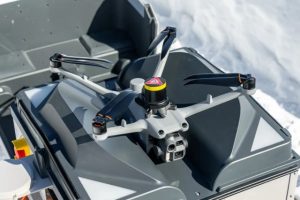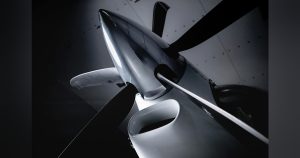Air Force Embraces Additive Manufacturing and 3D Printing for Critical Aircraft Components
Date: February 28, 2025
The U.S. Air Force is actively seeking industry partners capable of implementing additive manufacturing—commonly known as 3D printing—specifically for components deemed flight-critical in military aircraft. This initiative is a part of a broader effort to enhance the efficiency and reliability of military aircraft components through advanced manufacturing techniques.
Officials from the Air Force Life Cycle Management Center located at Wright-Patterson Air Force Base in Ohio recently issued a request for information (RFI) under document number FA8684-QAMVAP. This RFI aims at qualifying vendors capable of producing airworthy parts using 3D printing technologies.
Demand for Qualified Vendors
The Air Force’s incorporation of 3D printing for essential aircraft components necessitates that all vendors undergo a stringent qualification process. To this end, the Air Force is inviting submissions of white papers that detail procedures and methodologies for qualifying 3D printing vendors with respect to airworthiness.
Submissions must outline a robust process for evaluating and qualifying vendors by assessing criteria such as quality management systems (QMS), material quality, process controls, design abilities, data management, security protocols, and compliance with relevant regulatory frameworks.
Regulations and Compliance
Potential regulatory sources for these qualifications include the Federal Aviation Administration (FAA), the National Aeronautics and Space Administration (NASA), Amazon Web Services (AWS), the Department of Defense Instruction (DoDI), and the National Institute of Standards and Technology (NIST). These regulations will play a crucial role in creating a certified list of 3D printing vendors for flight-critical aircraft components.
Key Evaluation Factors
Responses to the Air Force’s RFI should address critical areas including:
- Quality Management Systems
- Material Qualification Procedures
- Process Validation
- Design for Additive Manufacturing
- Non-destructive Inspection Techniques
- Documentation and Traceability
- Collaboration with Airworthiness Authorities
- Data Management and Security
3D printing practices must also align with recognized industry standards such as AS9100 and ISO 9001, utilize advanced inspection technologies like CT scanning and ultrasonic testing, and include meticulous documentation of all production processes.
Invitation for Participation
The Air Force is eager to integrate reputable vendors into the defense supply chain to deliver high-quality, reliable components for future military aviation projects. Companies interested in participating are encouraged to submit comprehensive 12-page white papers in PDF format by April 22, 2025. Submissions can be directed to Andrew Gross at andrew.gross@us.af.mil and Matthew Mercer at matthew.mercer.1@us.af.mil.
For inquiries regarding the RFI, interested parties can reach out to Gross, Mercer, or Steven McCabe at steven.mccabe@us.af.mil. Additional information can also be found online at the official government site here.
For those in the industry, this represents a significant opportunity to contribute to air combat readiness through cutting-edge technology.













